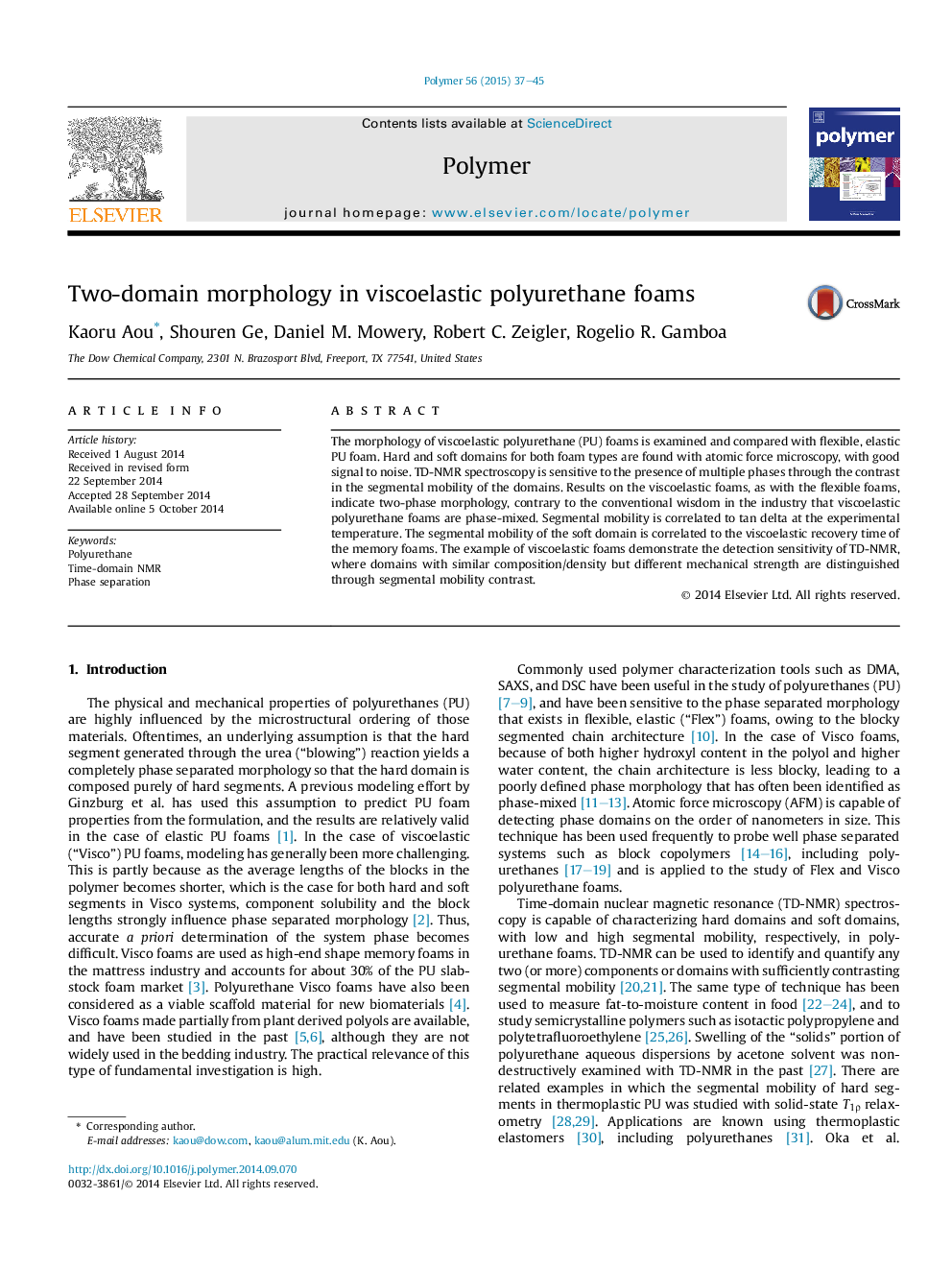| Article ID | Journal | Published Year | Pages | File Type |
|---|---|---|---|---|
| 5180579 | Polymer | 2015 | 9 Pages |
â¢Two-phase morphology found for viscoelastic PU, not phase-mixed as thought before.â¢AFM and time-domain NMR can detect systems with poor phase separation.â¢Slower viscoelastic compression recovery in part due to slower segmental mobility.
The morphology of viscoelastic polyurethane (PU) foams is examined and compared with flexible, elastic PU foam. Hard and soft domains for both foam types are found with atomic force microscopy, with good signal to noise. TD-NMR spectroscopy is sensitive to the presence of multiple phases through the contrast in the segmental mobility of the domains. Results on the viscoelastic foams, as with the flexible foams, indicate two-phase morphology, contrary to the conventional wisdom in the industry that viscoelastic polyurethane foams are phase-mixed. Segmental mobility is correlated to tan delta at the experimental temperature. The segmental mobility of the soft domain is correlated to the viscoelastic recovery time of the memory foams. The example of viscoelastic foams demonstrate the detection sensitivity of TD-NMR, where domains with similar composition/density but different mechanical strength are distinguished through segmental mobility contrast.
Graphical abstractDownload full-size image
